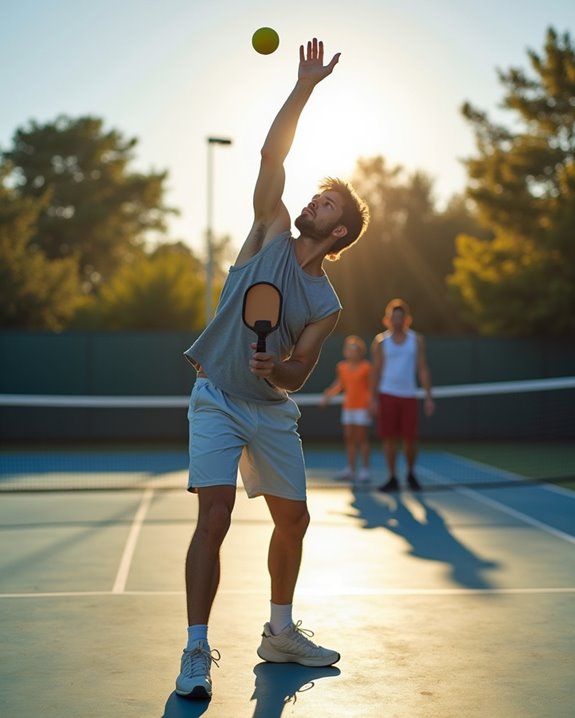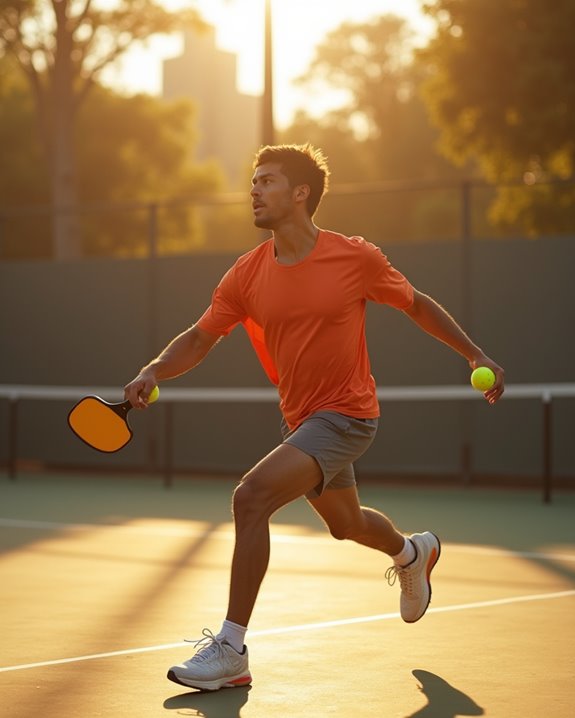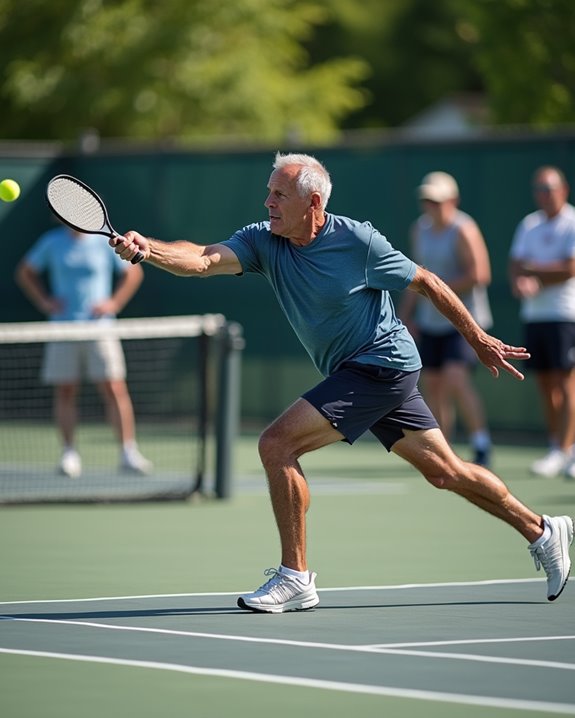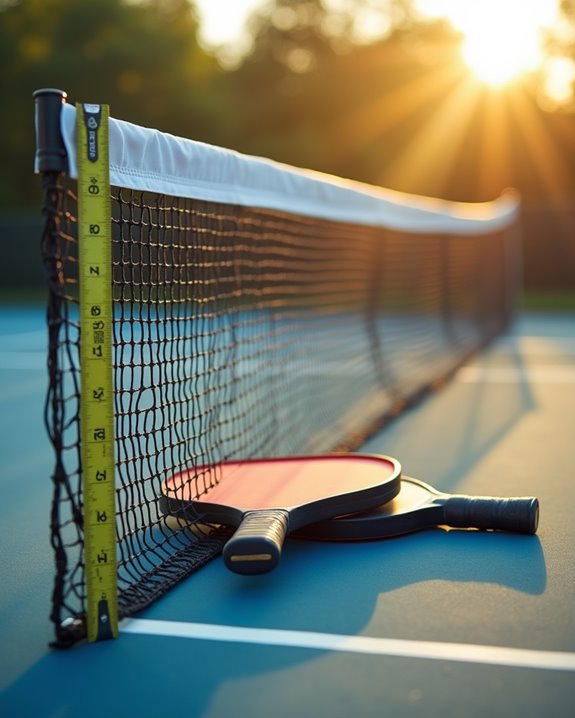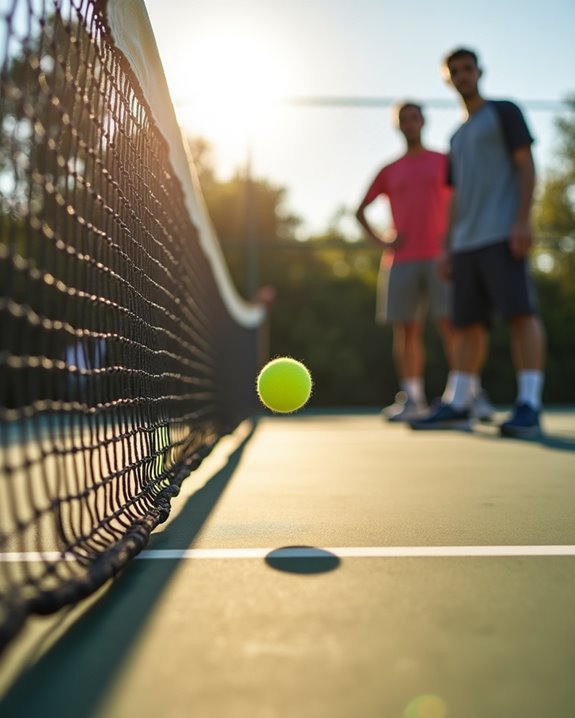In Major League Pickleball (MLP), you can now legally serve overhand by following specific requirements. Start with a visible ball toss, keep your paddle head below your wrist at contact, and use an arcing motion to strike the ball before it hits the ground. Don’t swing downward or hide your toss—these are common violations. The overhand serve adds power and strategic advantage to your game, creating unpredictable plays that can leave opponents scrambling. Master this technique to elevate your competitive edge.
Key Takeaways
- Toss the ball visibly upward before striking it with your paddle while maintaining an arcing motion.
- Keep your paddle head positioned below your wrist at the moment of contact with the ball.
- Strike the ball before it touches the ground, following through with an upward serving motion.
- Practice controlling your serve’s height-to-power ratio to effectively place shots deep in the court.
- Ensure your service motion follows an upward arc rather than a choppy or downward motion to comply with rules.
The Evolution of Overhand Serves in Pickleball
The pickleball serving landscape has undergone a sizzling transformation in recent years! You’ll notice the most tantalizing change in Major League Pickleball (MLP), where overhead serves have been folded into the recipe for 2024. This fresh ingredient adds a spicy kick to gameplay variety that traditional pickleball doesn’t permit.
When you’re maneuvering through different pickleball environments, remember that serving styles must adapt like a chef adjusting seasonings for different dishes. The overhand serve offers a strategic advantage in MLP—it’s like having a secret sauce in your arsenal! This game evolution represents pickleball’s continuous rise from simple appetizer to main course status.
Player adaptability is essential as serving techniques evolve. You’ll need to master both traditional and overhead methods, simmering your skills until they’re perfectly done for any competition format.
Major League Pickleball’s Overhand Serving Rules

Pickleball enthusiasts, prepare to spice up your game with MLP’s revolutionary overhand serving rules! Unlike traditional pickleball where only an underhand motion is legal, MLP has added a dash of excitement to the serving technique menu.
When executing an overhand serve in MLP, you must visibly toss the ball for the referee—think of it as presenting your ingredients before cooking. Your paddle head must remain below your wrist at the moment of contact with the ball, ensuring the serve doesn’t become too spicy for opponents to return.
Your arm must follow an arcing motion, like folding whipped cream into a batter. Remember, the ball must be hit before it touches the ground. These specialized rules are exclusive to MLP, so you’ll need to adjust your serving recipe depending on which format you’re playing.
Step-by-Step Technique for the Perfect Overhand Serve
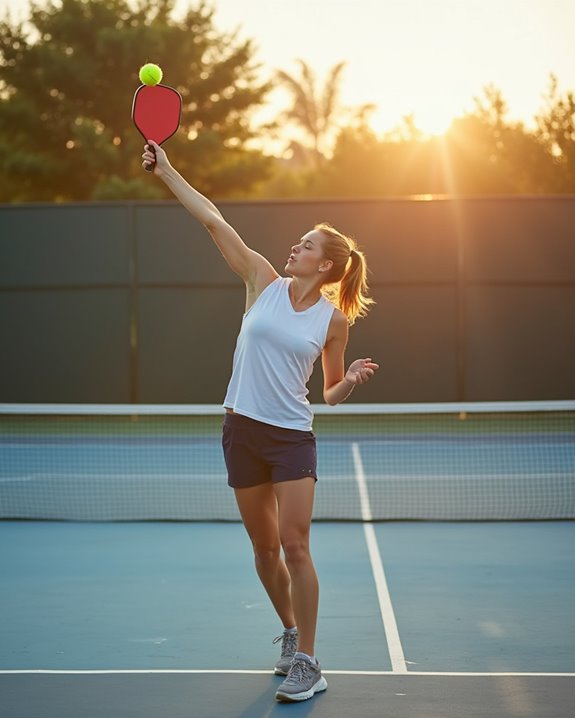
Now that you understand how MLP has reshaped serving rules, let’s break down the recipe for a mouthwatering overhand serve!
Begin by whisking the ball upward in a clear, visible toss for the referee to see. As you prepare to serve, keep your paddle head folded under your wrist like you’re gently folding egg whites into a soufflé. Simmer your arm motion in an upward arc, ensuring your paddle makes crisp contact with the ball before it falls to the ground.
When you hit the ball, aim for that sweet spot that allows your serve to sizzle downward into your opponent’s court. Remember, your serve hits best when you’ve mastered the height-to-power ratio—too high and it’ll go flat, too low and you’ll serve up a fault.
Common Mistakes to Avoid When Serving Overhand
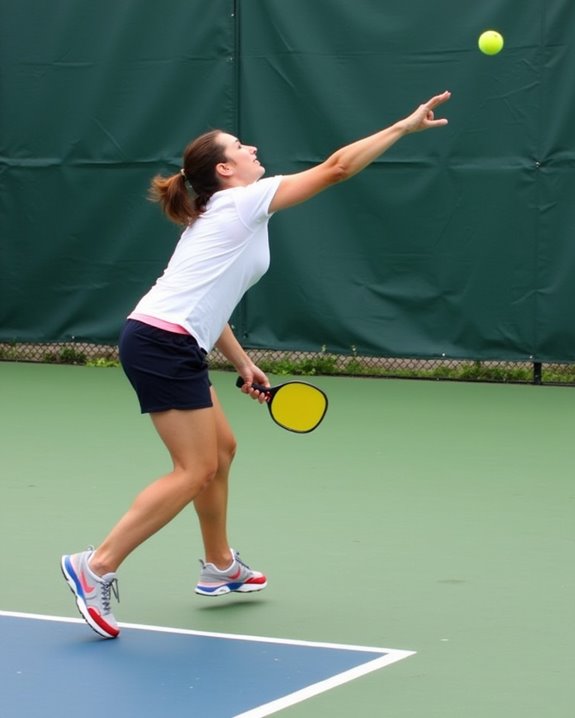
While mastering your overhand serve can elevate your pickleball game to gourmet status, several common mistakes might leave your technique half-baked.
Your paddle must remain below your wrist when striking the ball in MLP play—like folding ingredients rather than whipping them. Many players incorrectly toss with added force, fundamentally over-kneading their serve. Remember, you must hit the ball in an upward arc to serve the ball properly, not with a choppy motion that resembles dicing rather than slicing.
Another significant rule: make your ball toss visible, as if presenting a soufflé to judges. Finally, verify you contact the ball before it bounces, but remember the ball must bounce in the proper service court and clear the non-volley zone for a perfectly plated serve.
Strategic Advantages of Mastering the Overhand Serve
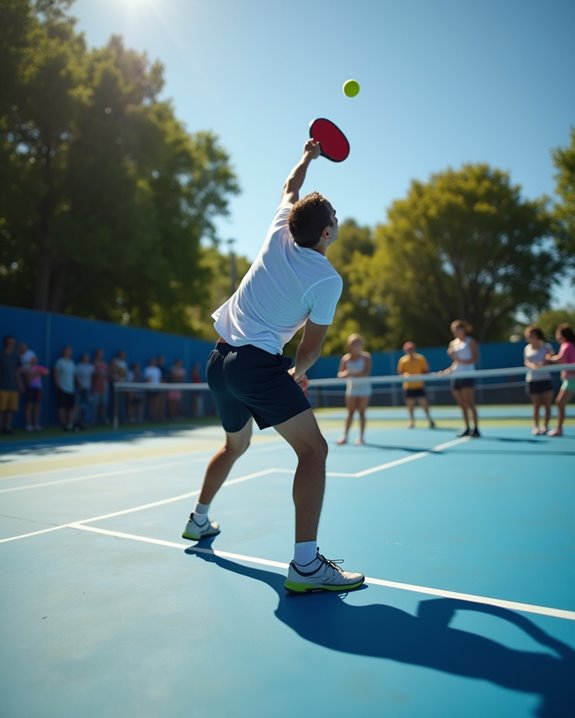
With those common mistakes out of the way, let’s heat up your game by exploring why the overhand serve is worth adding to your pickleball recipe book.
When you master the overhand serve, you’re fundamentally whisking together a powerful offensive advantage that can leave opponents scrambling. You’ll be able to serve diagonally with precision, strategically placing your shots like garnishes on a gourmet dish. The serving team gains immediate control when you can hit deep into your opponent’s court, forcing them to respect the bounce rule while retreating.
This technique adds spice to your serving repertoire, making your intentions harder to read than a complex recipe. You’ll win points more consistently by targeting weaknesses, especially when opponents stand too close to the kitchen line. It’s your secret ingredient for competitive play!
Transitioning Your Skills From Traditional to Overhand Serving
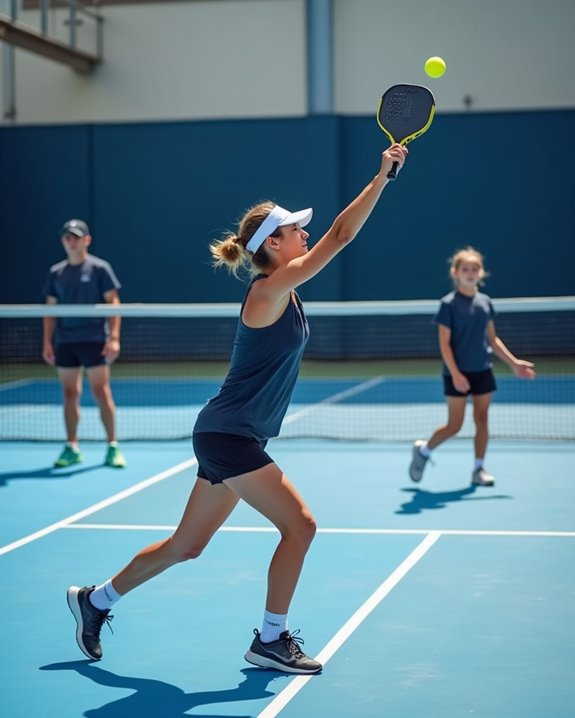
Making the leap from traditional to overhand serving is like upgrading from a basic cookbook to gourmet techniques—it requires attention to new mechanics while preserving fundamental principles.
When you must serve from behind the baseline, remember your paddle head must stay below your wrist when striking the ball. This maintains the upward arc essential for a legal serve in Major League Pickleball. You’ll need to “fold” your underhand stroke knowledge into this new technique.
Toss the ball visibly before it’s struck—think of it as displaying your ingredients before the main dish. Position yourself properly in the service court and incorporate wrist rotation for added flavor to your serve. Remember, this technique is only for MLP play; traditional pickleball still requires underhand serving.
Frequently Asked Questions
Why Does No Overhead Serve in Pickleball?
You can’t use overhand serves in pickleball because the rules prioritize game dynamics that favor strategy over power. This restriction enhances serve accuracy, creates balanced competitive play, and makes the sport more accessible to everyone.
What Are Three Things You Cannot Do in the Game of Pickleball?
In pickleball, you can’t serve overhand (one of the basic pickleball rules), you can’t volley within the kitchen (common mistakes beginners make), and you can’t step into the non-volley zone while hitting volleys (key player etiquette).
Are Overheads Banned in Pickleball?
Yes, overhead serves are banned in standard pickleball. You’re required to use underhand serve mechanics instead. Understanding this rule interpretation is vital for your skill development and competitive play. Proper player positioning remains essential for effective court placement.
What Is an Illegal Serve in Pickleball?
You’ll commit an illegal serve if your paddle’s above waist height, you hit after a bounce, have a foot fault, land in the kitchen, or violate serve mechanics. These serving faults break fundamental serve rules.

